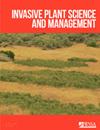识别可能随着气候变化而转移到新英格兰北部的高影响入侵植物
IF 1.2
4区 生物学
Q3 PLANT SCIENCES
引用次数: 4
摘要
气候变化使入侵植物的活动范围不断扩大,给入侵物种管理带来了新的挑战。早期发现和快速反应可以解决一些新生的入侵,但有限的资源使得不可能监测到每一个范围转移的物种。在这里,我们的目标是通过评估87种植物物种预计将转移到新英格兰北部(缅因州、新罕布什尔州和/或佛蒙特州)的影响,创建一个更有针对性的观察名单。我们使用外来分类群环境影响分类(EICAT)协议来评估科学文献中报告的所有生态影响,根据报告的影响程度将生态影响从1(最小关注)到4(主要)评分。对于每个物种,我们还记录了任何报告的对社会经济系统(农业、人类健康或经济)的影响。我们发现了24种对生态群落有影响的范围转移物种,其中22种对新英格兰北部常见的生态系统有影响。几乎所有这些物种也对社会经济系统产生影响,并且可以在观赏植物零售商或网上购买。因此,这些物种可以被认为是气候变化对新英格兰北部的高风险物种,因为它们具有巨大的负面影响,并且有可能在人类有意引入的情况下迅速到达。我们的研究展示了使用影响评估来创建入侵物种监测和管理的目标优先列表。本文章由计算机程序翻译,如有差异,请以英文原文为准。
Identifying high-impact invasive plants likely to shift into northern New England with climate change
Abstract Invasive plants are expanding their ranges due to climate change, creating new challenges for invasive species management. Early detection and rapid response could address some nascent invasions, but limited resources make it impossible to monitor for every range-shifting species. Here, we aimed to create a more focused watch list by evaluating the impacts of 87 plant species projected to shift into northern New England (the states of Maine, New Hampshire, and/or Vermont). We used the Environmental Impact Classification for Alien Taxa (EICAT) protocol to evaluate all ecological impacts reported in the scientific literature, scoring ecological impacts from 1 (minimal concern) to 4 (major) depending on the level of reported impact. For each species, we also recorded any reported impacts on socioeconomic systems (agriculture, human health, or economics) as “present.” We found 24 range-shifting species with impacts on ecological communities, of which 22 have reported impacts in ecosystems common to northern New England. Almost all of these species also had impacts on socioeconomic systems and were available for purchase at ornamental plant retailers or online. Thus, these species can be considered high risk to northern New England with climate change based on their large negative impacts and potential to arrive quickly with deliberate human introduction. Our study demonstrates the use of impact assessments for creating targeted priority lists for invasive species monitoring and management.
求助全文
通过发布文献求助,成功后即可免费获取论文全文。
去求助
来源期刊

Invasive Plant Science and Management
PLANT SCIENCES-
CiteScore
2.20
自引率
9.10%
发文量
24
审稿时长
6-12 weeks
期刊介绍:
Invasive Plant Science and Management (IPSM) is an online peer-reviewed journal focusing on fundamental and applied research on invasive plant biology, ecology, management, and restoration of invaded non-crop areas, and on other aspects relevant to invasive species, including educational activities and policy issues. Topics include the biology and ecology of invasive plants in rangeland, prairie, pasture, wildland, forestry, riparian, wetland, aquatic, recreational, rights-of-ways, and other non-crop (parks, preserves, natural areas) settings; genetics of invasive plants; social, ecological, and economic impacts of invasive plants and their management; design, efficacy, and integration of control tools; land restoration and rehabilitation; effects of management on soil, air, water, and wildlife; education, extension, and outreach methods and resources; technology and product reports; mapping and remote sensing, inventory and monitoring; technology transfer tools; case study reports; and regulatory issues.
 求助内容:
求助内容: 应助结果提醒方式:
应助结果提醒方式:


